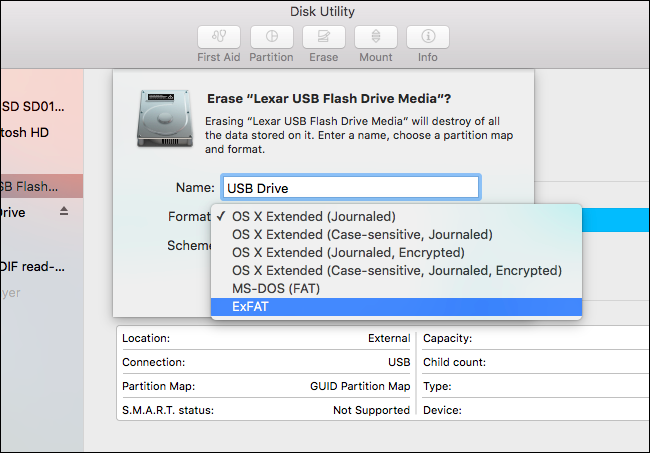

- FAT32 USB FOR MAC AND WINDOWS HOW TO
- FAT32 USB FOR MAC AND WINDOWS MAC OS
- FAT32 USB FOR MAC AND WINDOWS CODE
Samsung’s T1 and T3 external SSDs are very fast writers, but not nearly as fast with small files if you format them in exFAT rather than NTFS.
FAT32 USB FOR MAC AND WINDOWS CODE
If your code screws up writing to a drive, you may have ruined someone’s digital life. Reading from NTFS within other operating systems soon became possible, but reading is non-destructive, so if you mess up with the code, you still have the original file. Regardless of the why, denying access to that code was like waving a red flag in the face of open-source programmers worldwide.

It’s almost like they were in some sort of competition with other companies.
FAT32 USB FOR MAC AND WINDOWS HOW TO
Microsoft wasn’t feeling particularly generous when it came up with its second-generation file system, so the company didn’t tell anyone else how to implement it. Follow the on-screen instructions when the New Simple Volume Wizard appears.Why not use NTFS? Glad you asked.

You cannot use an APFS-formatted disk as your Time Machine backup drive.Windows cannot natively read or write to HFS+ (journaled) volumes.ĪPFS (Apple File System)-An Apple file system optimized for solid state drives (SSDs) and flash-based storage systems. This file system remains the best option for external hard drives and is the only format compatible with Time Machine.
FAT32 USB FOR MAC AND WINDOWS MAC OS
Mac OS Extended (HFS+)-An Apple file system optimized for macOS 10.12 and earlier. macOS can read NTFS volumes but cannot natively write to them. If you use the drive with only one type of computer, you can optimize file copy performance by formatting the drive in the native file system for your operating system-NTFS for Windows or HFS+ for macOS. Seagate One Touch SSD is preformatted exFAT for compatibility with both Mac and Windows computers.


 0 kommentar(er)
0 kommentar(er)
